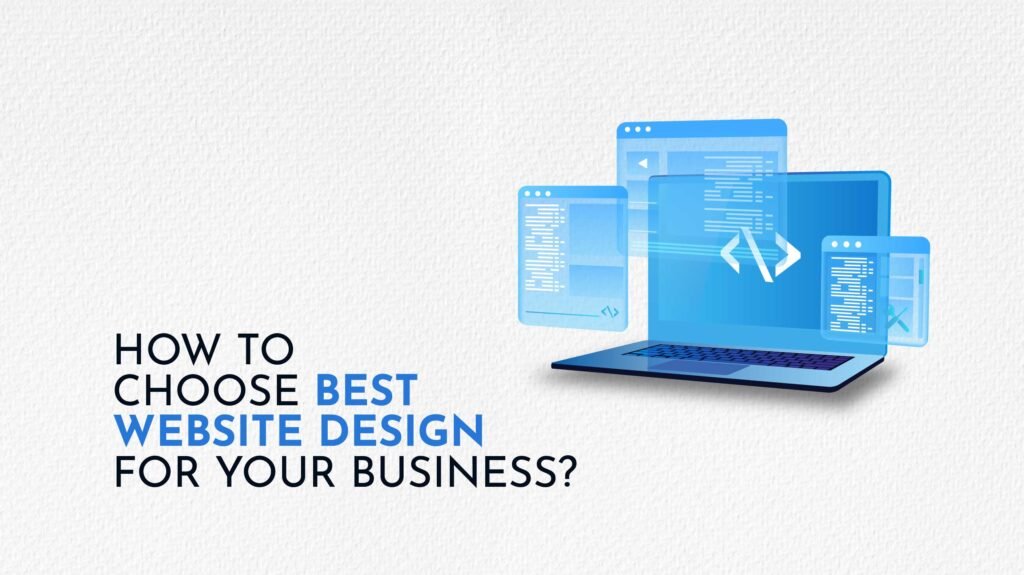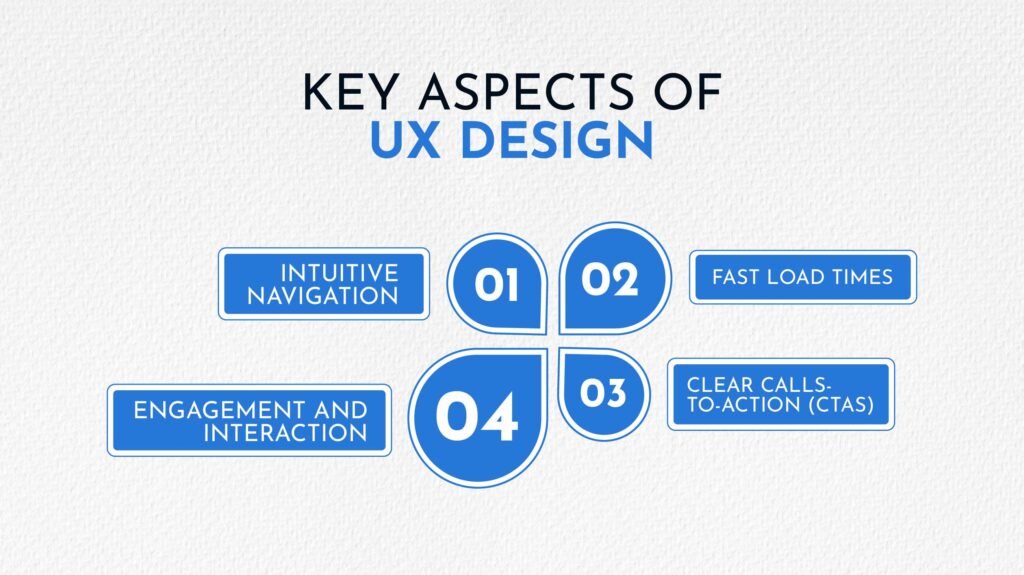Start by aski

In today’s digital-first world, your website design is often the first point of contact between you and potential customers. Whether you’re running an e-commerce platform, a blog, a service-oriented site, or anything in between, the design and development of your site can make or break the success of your online presence.
But with so many web design trends and options out there, how do you ensure you’re making the right choice for your business? This blog will walk you through the essential factors to consider when choosing the best web design that aligns with your business goals, improves user experience, and enhances your brand’s credibility.
We’ll break down the key design elements you need to focus on, from layout to user experience (UX), mobile responsiveness, and conversion optimization. Whether you’re launching a new site or redesigning an existing one, this guide will help you navigate the often overwhelming design process of choosing the right professional web design for your business.
To achieve successful web design, you may consider working with web design companies, a skilled website designer, or a web design agency that offers expert web design services. They not only help you make a website or build a website but also ensure the website design and development reflects your business name, identity, and goals.
Remember, web design best practices aren’t just about creating visually appealing pages. A professional web presence includes a strong landing page, smooth website creation, and the ability to optimize for conversions. Partnering with the right design companies or individual web designer ensures you can design websites that resonate with your audience and set you apart in today’s competitive web development landscape.
The first step in selecting the right website design is understanding your business goals and how your site needs to reflect them.
For example, if your goal is to sell products online, you’ll need professional web design that emphasizes product discovery, ease of checkout, and trust-building elements such as reviews, secure payment options, and clear calls-to-action. On the other hand, if your goal is to showcase your portfolio or offer informational content, your design should prioritize clarity, visual appeal, and intuitive navigation.
A skilled web designer or web design agency can help align your design and development efforts with your objectives, ensuring that your business name and brand identity are well-represented.
Start by asking yourself these questions:
By defining your goals, you’ll have a clear idea of what elements need to be incorporated into your website design and development. This clarity sets the foundation for successful web design and allows you to follow web design best practices throughout the design process.
The layout of your website plays a crucial role in how visitors interact with your content. A good layout will guide users seamlessly through your site, making it easy for them to find what they’re looking for.
Consider the following popular layout styles and how they align with your business objectives:
While choosing a layout, keep in mind that the design must complement your content and make it easy for users to navigate. A cluttered or confusing layout can turn visitors away quickly. Working with professional web experts from design companies or individual website designer professionals can help you build a website that enhances user experience while maintaining strong branding.
Whether you go for DIY website creation tools or hire experts in web development and web design services, the right choice will ensure that your site reflects your goals and delivers successful web design results.

ser experience (UX) is critical in determining whether visitors stay on your business website or bounce. A great web design is one that not only looks good but also provides a seamless experience for users.
Here are some key aspects of UX design that should be top of mind:
The goal is simplicity. Visitors should never have to guess how to navigate. An easy, enjoyable experience increases the chances of turning them into customers or leads—one of the hallmarks of top web design.
With over half of all web traffic coming from mobile devices, ensuring that your website design and development is mobile-friendly is no longer optional. A responsive approach is now considered part of web design best practices and is key to creating a strong professional web presence.
Here’s what you need to know:
Mobile-first Design: Many web designer professionals and design companies now start with mobile-first layouts before scaling up to desktop. This ensures a smooth design and development process.
Readable Text: Text must be large enough to read on smaller screens without zooming. A professional web design approach ensures typography works across all devices.
Optimized Images: Images and videos should be compressed for fast loading, a critical factor when you make a website or build a website for mobile-first audiences.
Touchscreen Navigation: Buttons, menus, and links must be easy to tap on smaller screens. This is a key part of web design and development for modern users.
A mobile-responsive business website not only improves user experience but also boosts search engine rankings, since Google uses mobile-friendliness as a ranking factor. Whether you handle website creation in-house or hire web design services from expert web design companies, prioritizing responsiveness ensures successful web design outcomes.
Your website design should visually communicate your brand identity, including your colors, fonts, logo, and overall style. A cohesive and attractive business website builds professionalism and trustworthiness while ensuring a memorable brand presence.
Here are some tips to consider when focusing on the visual aspects of your site:
The visual elements should all work together to create a professional web presence that is both aesthetically pleasing and functional. This is why many businesses partner with web design companies or experienced website designer professionals for cohesive design and development.
Even the most beautiful web design won’t drive results if nobody finds your site. This is where search engine optimization (SEO) becomes essential. Incorporating SEO into website design and development helps your site rank higher, making it easier for potential customers to discover your brand.
Some SEO-focused web design best practices include:
By blending SEO with professional web design, you create a top web design strategy that ensures visibility, usability, and growth. Whether you handle website creation internally or outsource to design companies offering web design services, aligning SEO with successful web design maximizes your chances of being discovered by your target audience.
Your business will evolve over time, and your business website needs to grow with it. When choosing a website design, consider how easy it will be to update and scale as your company changes.
Some things to consider for future-proofing your website design and development include:
Choosing a scalable design ensures that your professional web design adapts to your business, without needing a full overhaul every few years.
Selecting the best web design is a crucial step in building a strong online presence. By defining your business goals, enhancing user experience, prioritizing mobile responsiveness, aligning visuals with your business name, and following web design best practices, you can achieve successful web design that drives results.
Your business website is more than just a digital space—it’s a powerful tool for growth. Whether you make a website yourself or partner with expert design companies or web design companies, the goal should be to create a platform that not only looks professional but also performs seamlessly.
By focusing on scalability, SEO, and modern web design trends, you’ll be able to build a website that evolves with your business. Partnering with the right website designer or web development team ensures your site is ready for today and future-proofed for tomorrow.
In the end, investing in professional web solutions and working with a trusted web design agency will help you design websites that truly represent your brand, support growth, and achieve your long-term objectives.